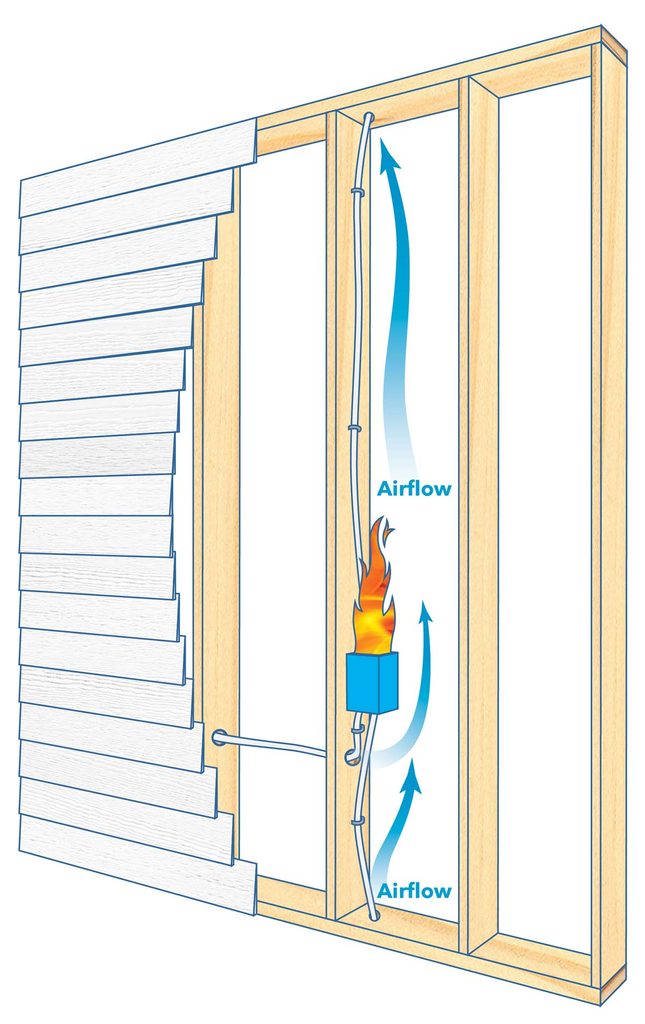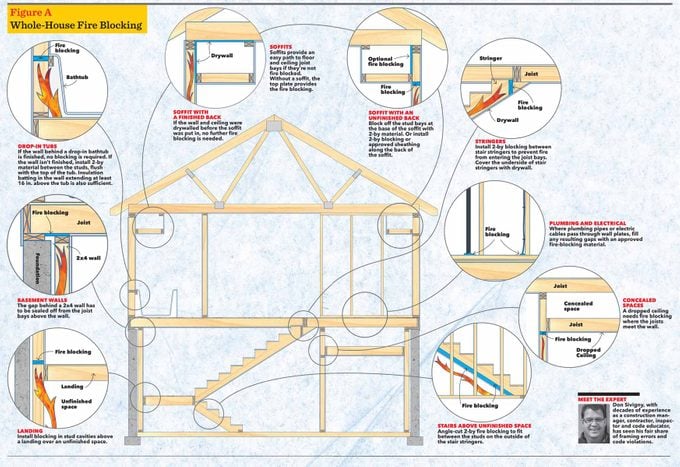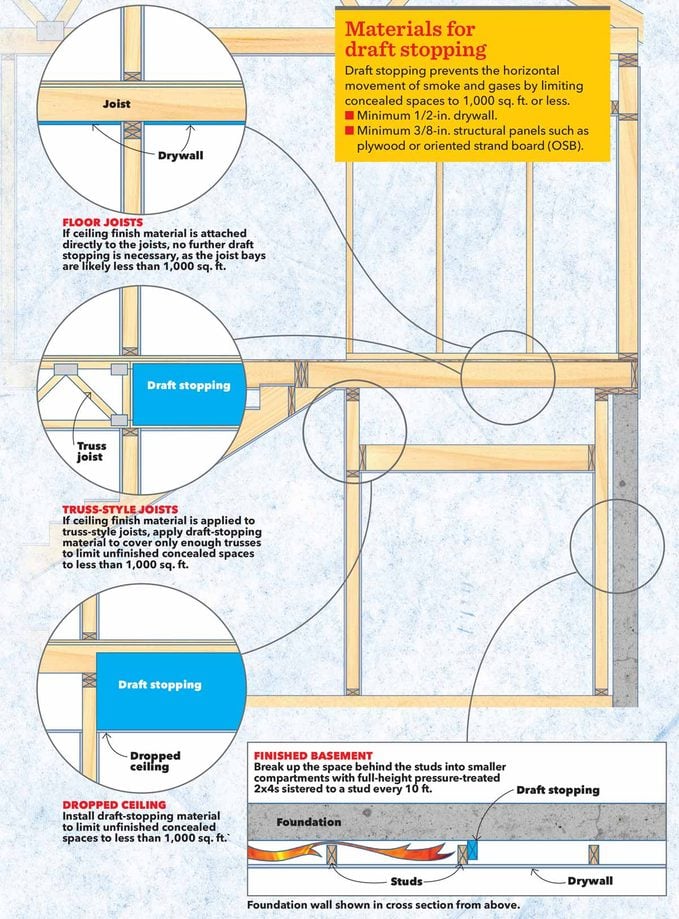Fire Blocking Basics: What Every Homeowner Needs to Know
Updated: May 19, 2023

Holes and gaps in wall and ceiling cavities allow a fire to spread rapidly. They also allow airflow, which feeds a fire. Sealing these gaps slows or may even stop the spread of flames, smoke and gases.
Code requirements for adding fire blocking and draft stopping apply mainly to new construction. But if you’re finishing a basement, putting on an addition, remodeling a room, or just running pipes or wires through a plate, you’ll need to include fire blocking. We’ll show you the most common fire blocking applications on the following pages so you can apply the principles to your project. Check out our expert guide for how to prevent home fires.
On This Page
The Problem: Wall and Ceiling Cavities

Holes and gaps in wall and ceiling cavities allow a fire to spread rapidly. They also allow airflow, which feeds a fire. Sealing these gaps slows or may even stop the spread of flames, smoke and gases. Fire blocking aims to prevent or at least slow the vertical movement of flames, smoke and gases by sealing off concealed spaces like stud cavities and soffits. Smoke and gases readily travel horizontally as well, so preventing horizontal air movement, such as within a dropped ceiling, has its own name: draft stopping.
Locations for Fire-Blocking in Your Home:

Materials for Fire Blocking:
Materials approved for fire blocking are just common building materials.
- 2-by (1-1/2 in. thick) lumber.
- Two layers of 1-by lumber.
- One layer of 3/4-in. plywood with 3/4-in. plywood covering any seams.
- One layer of 3/4-in. particleboard with 3/4-in. particleboard covering any seams.
- 1/2-in. drywall.
- 1/4-in. cement board.
- Batts or blankets of mineral wool or fiberglass insulation secured in place.
- Cellulose insulation installed as tested for the specific application.
- Approved spray foams and caulks.
Draft Fire-Blocking

Fire departments in the United States respond to more than 350,000 home structure fires each year, according to the National Fire Protection Association. On average, seven people died in home fires every day between 2011 and 2015. Here are 12 fire safety tips you need to know.
